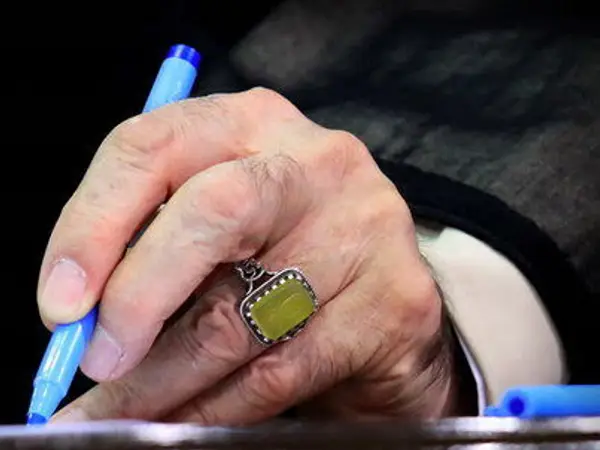Iran's media watchdog has banned a newspaper after it published a frontpage graphic showing Supreme Leader Ali Khamenei's left hand drawing a “poverty line.”
Allaudin Zohurian, the board’s secretary announced it had voted to revoke the publication license of Kelid (Key) but gave no reason. After six years’ publication, the newspaper’s website has gone offline.
The decision to ban the newspaper was taken two days after social media uproar over a graphical version of a much-circulated photo of Khamenei'sleft hand holding a blue pen and writing. The newspaper splashed a headline "Millions of Iranians Under Poverty Line."
The hand depicted in the graphic, bearing a ring with an amber stone, left no doubt as to whose hand it was. Khamenei's other hand, the right, was paralyzed in a June 1981 bombing, widely attributed to the now Albania-based Mujahedin-e Khalq Organization (MEK), when he narrowly escaped death when a Friday imam in Tehran.
Many hardliners on social media immediately detected defamation, with some blaming reformists although Kelid (Key) is known for strong conservative leanings and criticism of the former centrist president Hassan Rouhani.
The Young Journalists Club (YJC), an affiliate of the state broadcaster IRIB, had recognized the hand in the Kelid graphic. Director General for Domestic Media, Iman Shamsaei, told YJC that the Press Supervisory Board would investigate the case the next day.
The board has revoked licenses of dozens of newspapers in the past two decades for various for alleged violations including anything that could be interpreted as criticism of the Supreme Leader. Iran International journalist Morteza Kazemian said that its action over Kelid showed red lines governing criticism of Khamenei and that “journalists must navigate in a minefield to work.” He said the ruling would lead to “even more self-censorship on the part of all journalists."
Chief editor of the London-based opposition Kayhan newspaper, Elahe Boghrat, tweeted Monday that Kelid had illegally lifted from the Internet the graphic, drawn by Ali Eshtyagh for Kayhan in March 2021, removing the artist’s signature.
After three years of United States ‘maximum pressure’ sanctions, Iran faces more than 45 percent general inflation and more than 60 percent food price inflation. Real expenditure per person peaked in 2017, the year before the US left the Iranian nuclear deal and introduced the sanctions.
The World Bank reported in October that“the loss in household incomes due to the pandemic (owing to lockdowns) and rising living costs due to inflation [had] added more pressures on low-income households.” The bank concluded that “these shocks are likely to have determined a sizeable increase in poverty.”
The head of Iran’s largest state charitable organization, the Imam Khomeini Relief Committee, Morteza Bakhtiari, claimed August 15 that a 22-fold increase in living expenses between 2001 and 2019 was responsible for 33 percent of the Iranian population being under the poverty line.
